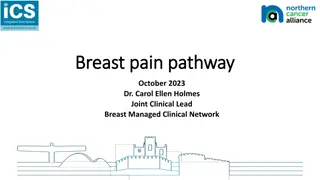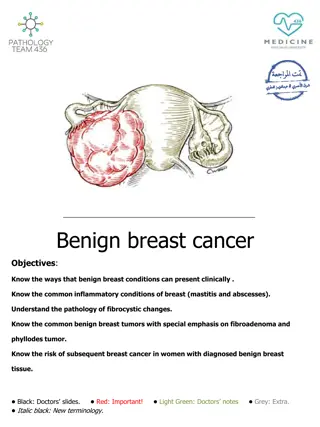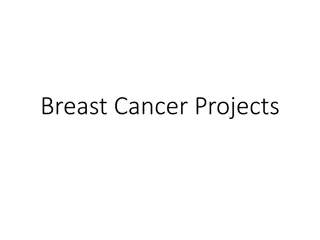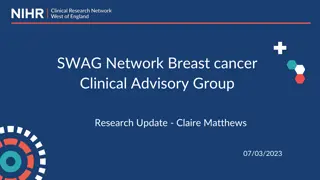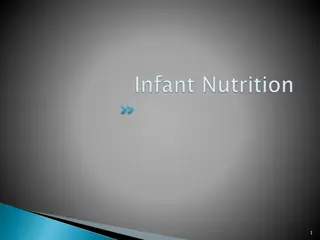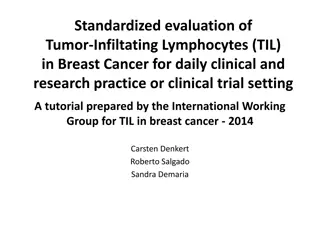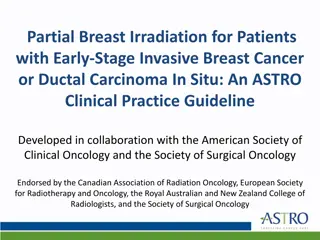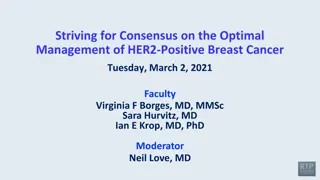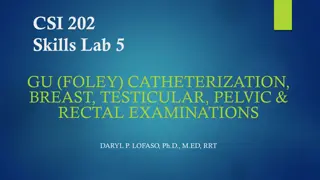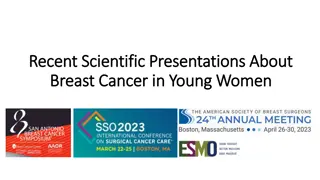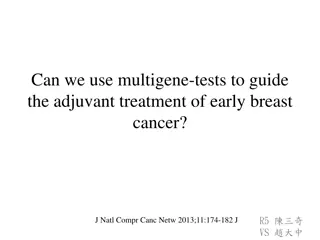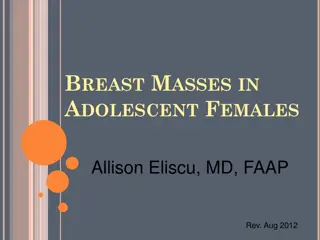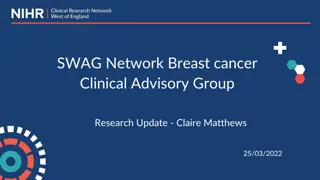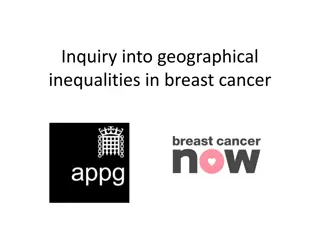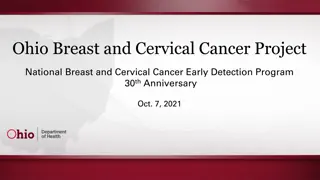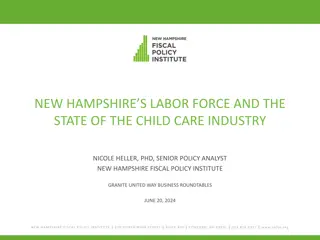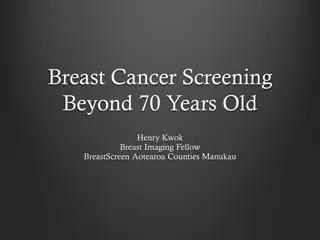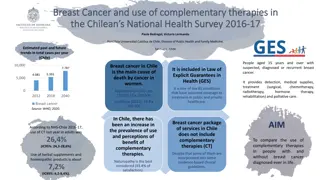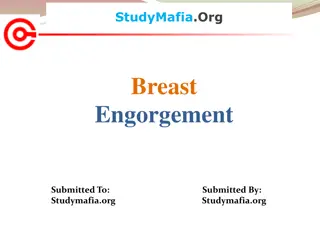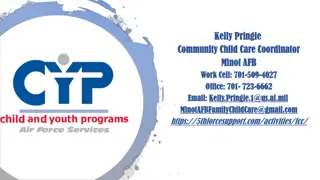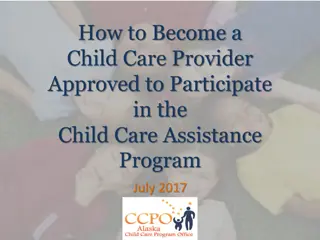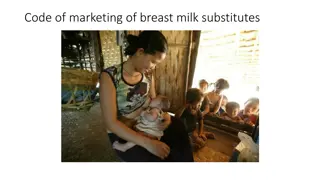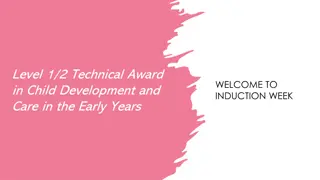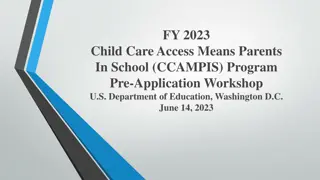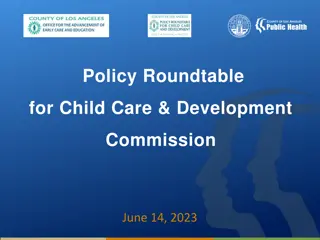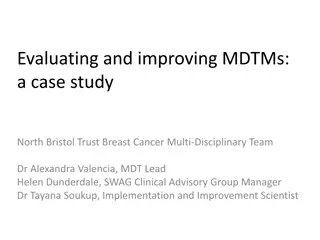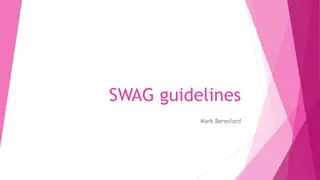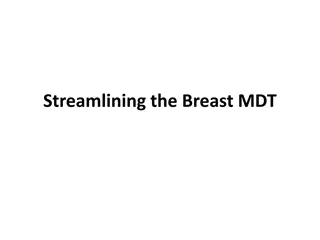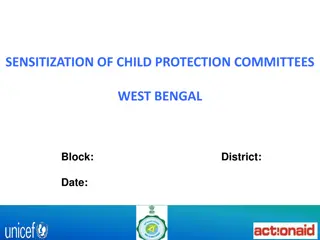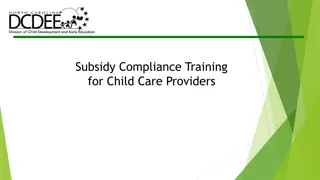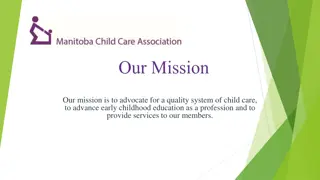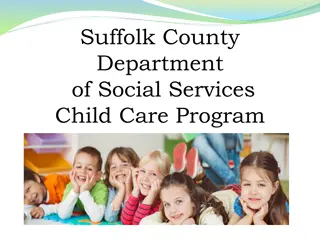Breast/Chestfeeding Friendly Child Care Practices for August 2023
Supporting breast/chestfeeding in child care environments is crucial for promoting the health and well-being of babies. Human milk-fed babies experience fewer illnesses, benefit from easier digestion, and have financial advantages. Implementing best practices such as creating supportive environments, sharing breastfeeding benefits, providing education and professional development, and involving families can help establish a breast-friendly child care setting.
Download Presentation

Please find below an Image/Link to download the presentation.
The content on the website is provided AS IS for your information and personal use only. It may not be sold, licensed, or shared on other websites without obtaining consent from the author. Download presentation by click this link. If you encounter any issues during the download, it is possible that the publisher has removed the file from their server.
E N D
Presentation Transcript
Breast/Chestfeeding Friendly Child Care August 2023
Why Support Breast/Chest Feeding? Human milk-fed babies are sick less often* fewer colds & ear infections, less diarrhea protects against SIDS Human milk is easier for baby to digest babies spit up less & have less smelly diapers compared to formula-fed babies Financial benefit in CACFP claim breast fed meals in in the CACFP, whether fed with bottle or by parent on site *Pediatrics (2022) 150 (1): e2022057988.
Support Breast/Chest Feeding by Following Best Practices: 1. Child Care Environment 2. Support Practices 3. Education & Professional Development 4. Policy
1.Child Care Environment Space is always available for feeding/pumping to families and staff Always enough refrigerator space for human milk storage Elements in the physical space promote breastfeeding (no materials from formula companies)
2. Breast/Chest Feeding Support Practices Share benefits of human milk feeding Share how your child care program supports breast/chest feeding Share community organizations that provide breast/chest feeding support Share educational materials (nothing from formula companies) Show positive attitudes about breast/chest feeding Flexible paid or unpaid break times are provided to teachers and staff to express/pump breast milk
3. Education & Professional Development For Staff/Teachers Staff training offered regularly Important topics to cover: Proper storage and handling of human milk Bottle-feeding a breastfed baby Benefits to parent and baby Promoting breastfeeding and supporting parents Community resources (for referral and support) Policy and practice at your child care
3. Education & Professional Development For Families Prospective families are told about breast/chest feeding policy and practice Enrolled families are regularly offered education
4. Breast/chest feeding Policy A comprehensive policy should include: s Providing space for families AND staff to feed or express (pump) human milk Flexible paid or unpaid break times for staff to breastfeed/pump (in compliance with state & federal laws) Providing refrigerator and/or freezer space to store human milk Professional development on breast/chest feeding Educational materials for families/staff on breast/chest feeding
Resources and References American Academy of Pediatrics Policy Statement: Breastfeeding and the Use of Human Milk: https://doi.org/10.1542/peds.2022-057988 Community breast/chest feeding resources for families searchable by zip code: www.ZipMilk.org Free online breastfeeding information for families in English, Spanish, Arabic: https://www.readysetbabyonline.com/ CT Breastfeeding Friendly Child Care Toolkits, Recognition Program & Paced Bottle-Feeding resources: https://www.breastfeedingct.org/child-care.html Continuity of Care in Breastfeeding Support Blueprint. https://www.breastfeedingcontinuityofcare.org CT Go NAPSACC. Support for implementing Breast/Chest Feeding Best Practices. https://gonapsacc.org/participating-states Caring for Our Children National Standards. Chapter 4: Nutrition and Food Service. 4.3.1.3: Preparing, Feeding, and Storing Human Milk: https://nrckids.org/CFOC/Database/4.3.1.3 USDA, Food and Nutrition Service. Breastfed Babies Welcome Here. Tools for CACFP providers: https://www.fns.usda.gov/tn/breastfed-babies-welcome-here For more information on CACFP requirements please visit: https://portal.ct.gov/SDE/Nutrition/CACFP- Child-Care-Centers. Before implementing any changes to your program s food and nutrition policies or practices, contact your CACFP representative to ensure you are meeting all rules and regulations Disclosure: The information in this module is based on a variety of sources listed above. It highlights key points relevant to this topic, but is not exhaustive. Please refer to the above resources for more information.
Thank You! Made possible with funding from the Centers for Disease Control and Prevention



